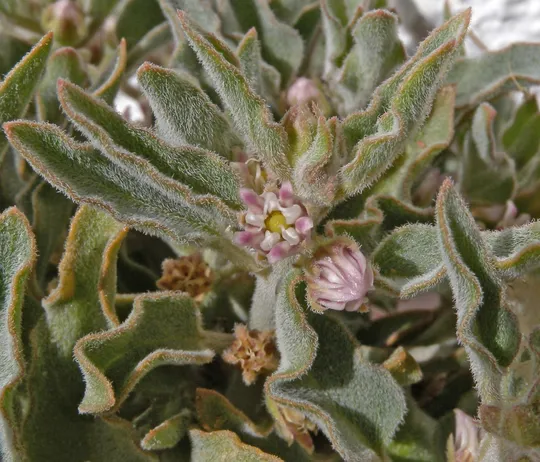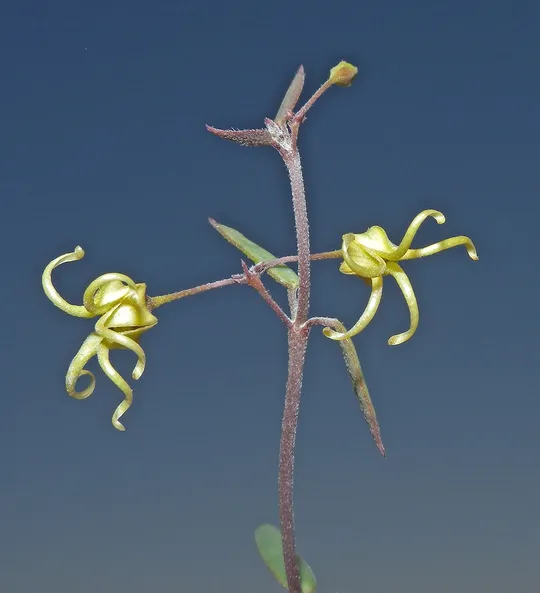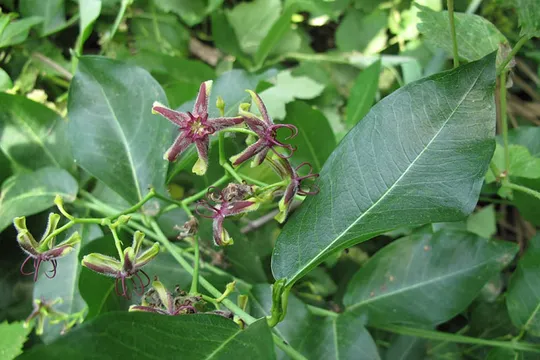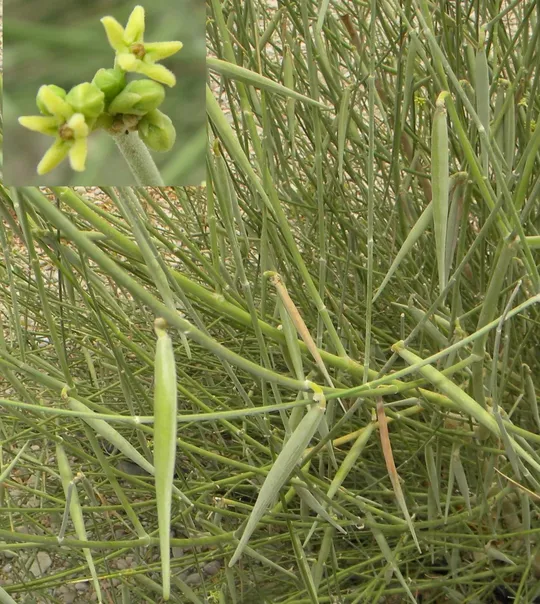Oxystelma alpini
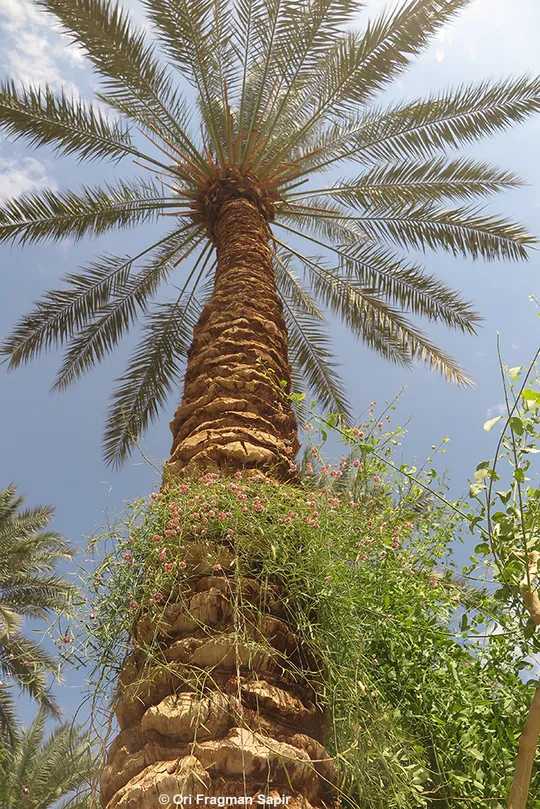
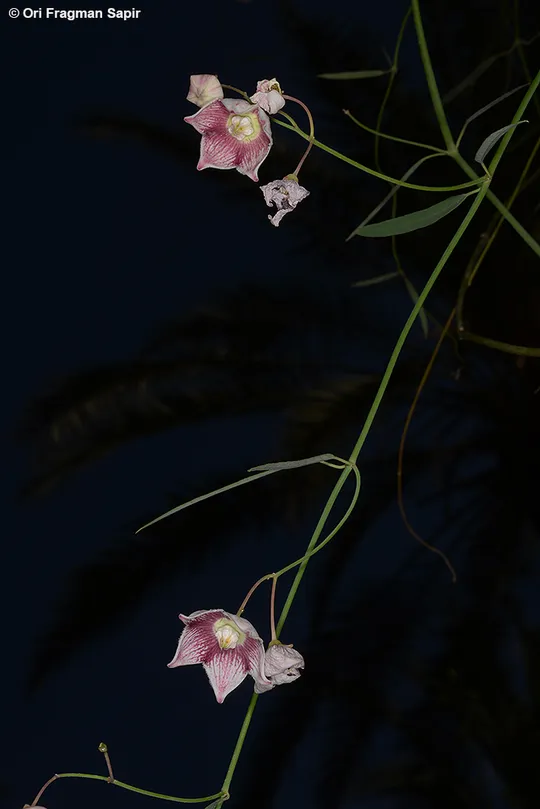
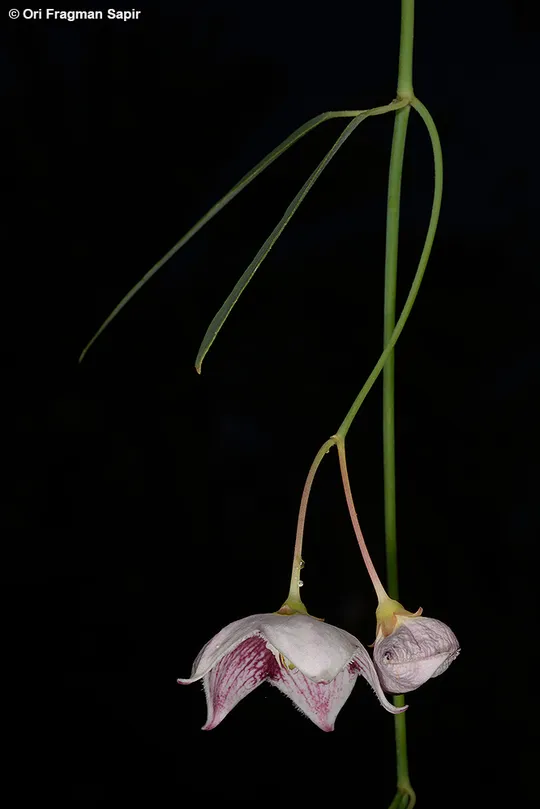
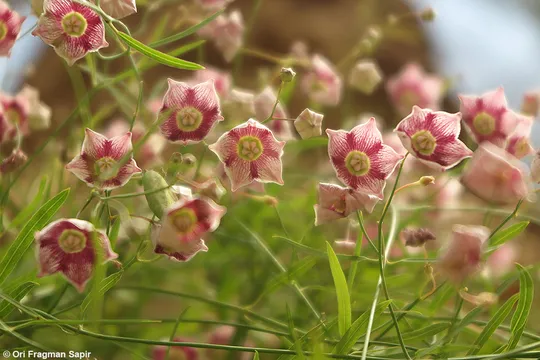
Research was done in India on Oxystelma esculentum as a source of glycosides, which affect the heart muscle and the nervous system.
In the Middle East Oxystelma esculentum was known in the past and is known today solely from the Dead Sea region in the En Gedi area. Zohary (1981) reported the species from a wadi in Sinai, north of Sharm Aa -Sheikh, but there is no additional confirmation. The species was first discovered in 1951 in the Arugot Stream in En Gedi. In the past, three specimens were known from three different locations in the En Gedi area: one at the En Gedi spring (sample in the Hebrew University Herbarium) that was continuously observed until 1980 (Schmida and Or, 1983). The second, in the hidden waterfall of the Arugot Stream, was seen until 1982. The third and best known, was found until recently in the deep gorge at the entrance to the Arugot Stream, but has not been seen there since 2001. All the efforts to find Oxystelma esculentum in the oases round the Dead Sea (particularly Tsafi and Kallirrhoe) were unsuccessful.
Moist sites – springs, at the edges of flowing water and pools in particularly hot oases. Climbs on trees (acacias at the En Gedi springs).
This is a typical Sudanian species. The genus Oxystelma includes only two species and they are found in the Paleotropic region. According to Flora Palaestina, the African species O. alpini and the Asian species O. esculentum are two varieties of the same species.
• This is one of the few cases in plants where population size is the primary threat factor.
• The extinction of the two Oxystelma esculentum specimens from the En Gedi springs was probably a result of over-pumping.
• For decades, only three individuals were known in the En Gedi area, at three different sites a hundred meters or more apart. Today it seems that only one specimen has survived.
• The species is widely distributed in India and Africa, and apparently is not endangered globally. Climbing plants from the Asclepiadaceae family are usually characterized by low local density but possess an excellent propagation capability that contributes to their broad geographical distribution. This trait protects it from global extinction, but not from local extinction.
The plant at the entrance to the Arugot Stream produces fertile seeds; they should be germinated in local nurseries and then replanted near the En Gedi spring and in other moist habitats in the reserve. Planted individuals grow successfully in the garden of the En Gedi Field Studies Center and in the Knesset gardens.
Grows in the tropical-arid area of the Old World: from Indonesia, Sri Lanka and Burma in the east, through India, Pakistan and Iraq, and in Africa in Sudan, Egypt, Ethiopia and Chad. It is not found in Yemen. Its global habitat is described as “disturbed moist locations, on the edges of cultivated areas".
A Sudanese climbing plant, possibly the rarest plant in the country. Is severely threatened despite growing in a nature reserve. A peripheral species, which in the entire Levant, was only found, formerly and today at the Arugot Stream in En Gedi. Some of the plants may have disappeared due to the dwindling water flow in the En Gedi spring. Since hyrax do not consume the species because of its toxicity, the large, dense hyrax population is probably not the cause of extinction at En Gedi. New plantings in suitable locations at En Gedi may provide a good solution to its continued existence.
שמידע א. ואור, י. 1983. הצמחייה הסודנית בישראל. רתם 8, עמ' 119. הוצאת החברה להגנת הטבע.
Current Occupancy Map
| 1000 squre meter pixel | 5000 squre meter pixel | 10000 squre meter pixel | |
|---|---|---|---|
| number of observations | 0 | 0 | 0 |
| in total pixels | 0 | 0 | 0 |
| Family | Asclepiadaceae |
| Classification | On the endangered species list |
| Ecosystem | Desert |
| Chorotype | Sudano – Decanian |
| Conservation Site | En Gedi Nature Reserve |
| Rarity |
1
6
6
|
|---|---|
| Vulnerability |
0
4
4
|
| Attractiveness |
0
0
4
|
| Endemism |
0
0
4
|
| Red number |
1
5.8
10
|
| Peripherality | S |
| IUCN category | DD EW EX LC CR EN VU NT |
| Threat Definition according to the red book | Critically endangered |
 Based on:
Based on:
